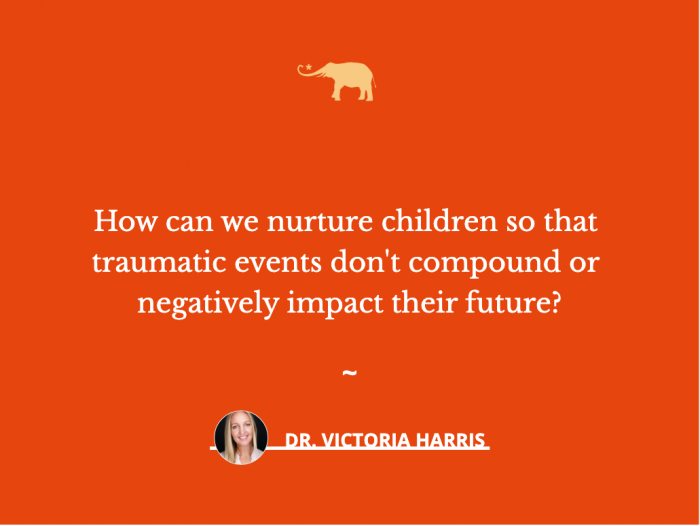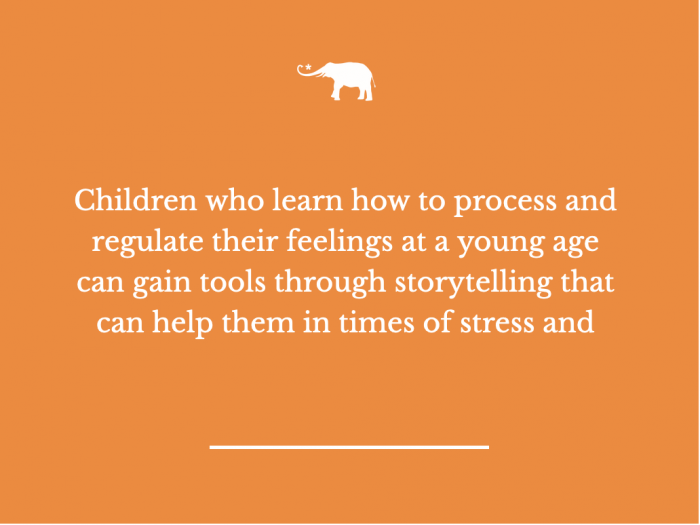Stories do more than just entertain our children; they hold the potential to heal.
Prior to the 1600s, children as young as seven were treated as mini-adults and expected to carry emotional loads, just like adults. We have since learned that human brains still develop until around age 25; how we nurture children in their formative years is critical.
How can we nurture children so that traumatic events don’t compound or negatively impact their future?
Due to COVID, children of the 2020s have spent much of their short lives hearing stories punctuated by the real fear of death.
Many were exposed to these concepts while in lockdown, isolated from friends and extended family. Already limited by immature frontal lobes, children of the pandemic face increased struggles with mental illness. Those aged three to seventeen years are experiencing a rise in diagnoses of attention-deficit/hyperactivity disorder (ADHD), anxiety, depression, obsessive-compulsive disorder (OCD), post-traumatic stress disorder (PTSD), and even eating disorders.
Today, one-in-six children suffer from a mental health disorder, affecting the way they learn, behave, and manage emotions.
Good, old-fashioned stories might offer children relief.
Stories can play a significant role in healing, helping children gain insight, resilience, and freedom from traumatic life events. Stories are also readily accessible tools that can help children process grief, despair, and anxiety in a safe, productive manner.
You likely know The Boy Who Cried Wolf and its lesson already. A boy falsely cried “wolf” before a threat existed, tricking the townspeople. When the threat became real, the villagers ignored the boy’s calls for help, believing them to be lies—which led the wolf to kill many sheep.
Stories work with older children, too, even when the stories change.
Teens read young adult books like The Outsiders, The Hunger Games, and Divergent, many of which involve dystopian tales of kill-or-be-killed, or themes of falling in love with the wrong person or trying to fit in. If your teen is reading these books, you can start conversations about peer pressure, feeling like an outsider, social injustice, or the power of unity.
Stories can be used by therapists or parents in three distinct ways to facilitate the healing process.
Here’s how to use stories to help children express and process emotions:
1. Make children the authors of their stories.
Children can safely explore their inner world when they author their own stories. If they are old enough, provide them with a journal to write thoughts, feelings, challenges, life events, or dreams. (Younger may need to tell you their stories.)
In therapy, we call this expressive writing, freewriting, or journaling.
You may ask whether the child would like to read part of their writing to you. By giving them the choice, you reinforce their control over what is disclosed—which is critical, especially after traumatic events where they lacked control.
When a child shares what they wrote, follow-up questions like, “How did that make you feel?” or “What do you wish happened instead?” Help them address emotions that may have been unregulated at one time. With adult guidance, children can learn to reconstruct their stories, detach from the most negative emotions of the event, process the “lesson” in the experience, and regulate future emotions.
2. Allow children to create an alternative ending
Another creative storytelling technique for processing complex emotions is asking a child to “create their own ending” to a familiar story. For example, five-year-old James loves Jack and the Beanstalk. After reading it together, you may help James explore the story and how it relates to him:
Why do you think Jack traded the family cow for beans? What should he have done instead? If you could trade our family car for something, what would you want?
Jack stole from the giant. How do you think he could have made friends with the giant? Has anyone ever taken something from you? How did you feel?
How do you think Jack felt when he saw the goose that laid golden eggs? Have you ever wanted something that belonged to someone else? How did you feel?
By listening for responses that promote further emotional exploration, we provide children with a safe context to learn—and potentially heal. By validating their experiences and helping them process emotions safely and at their own pace, we allow children to be children—with adult guidance around the issues that matter most.
Older children can be encouraged to “rewrite the ending” to stories. The exercise of envisioning new endings prepares teens to process similar traumatic events in their lives and create new emotional pathways to work through challenges.
3. Include children in intergenerational storytelling
Family stories provide children a proactive and healing role as well as the context around future challenges. These stories bridge generations, teach family identity, and increase well-being.
Dinner, vacations, and holidays offer perfect times to retell intergenerational stories of strength and success that can help children develop a sense of identity and resilience.
Think of your own stories involving a family member overcoming obstacles or rallying together. Success stories help children believe that they, too, can prevail.
For example, raised in the Depression, Ruth lived in poverty. She told stories of growing up poor, but she also shared stories of strength. After seeing her father return home from a merchant to discover he was given back more change than he was owed, he walked two miles back to the store to return the money. By sharing this, Ruth impressed upon her own children that integrity and grit were integral parts of the families’ character, which showed them how to use values to guide their actions.
Children who learn how to process and regulate their feelings at a young age can gain tools through storytelling that can help them in times of stress and trauma. Giving them an active role in authoring their own future and helping them heal from life events such as the recent pandemic.


 Share on bsky
Share on bsky






Read 0 comments and reply